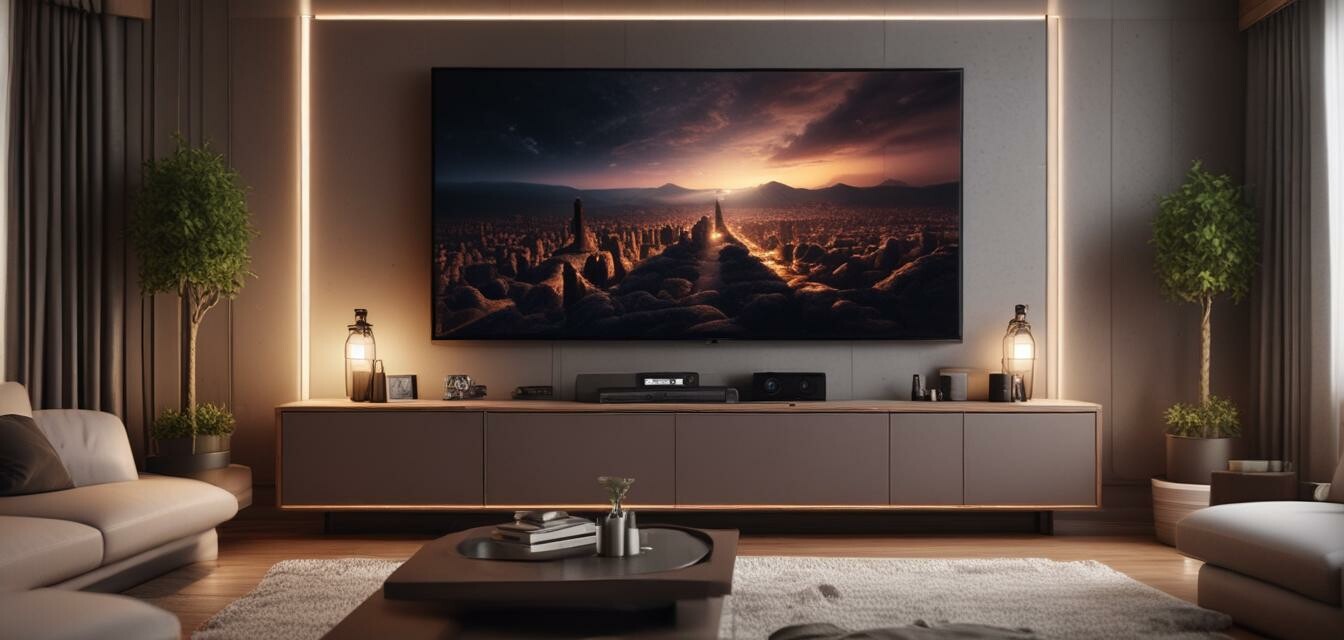
How the Pandemic Affected Home Entertainment Trends
Key Takeaways
- The pandemic accelerated the shift to at-home entertainment, influencing purchasing trends.
- Streaming services gained massive traction, shaping the content landscape.
- Upgraded audio and visual systems became a top investment for many households.
- Emergence of smart home integration transformed how entertainment is consumed.
- Community engagement for entertainment grew through online streaming and gaming.
The COVID-19 pandemic has significantly transformed our daily lives, steering us towards more in-home activities. As lockdowns took hold and social distancing measures were implemented, the way we consume entertainment evolved rapidly. This article analyzes the long-term changes in home entertainment trends brought on by the pandemic.
The rise of streaming services
As theaters closed and live events were canceled, many turned to streaming services for their entertainment fix. This pivotal shift reshaped our viewing habits and introduced us to new ways of consuming content. The growth of streaming was propelled by:
- Increased subscriptions to popular platforms such as Netflix, Disney+, and Hulu.
- The expansion of original content, leading to a variety of viewing choices.
- An increase in binge-watching habits, with people consuming entire seasons of shows at once.
Streaming services not only gained popularity but also began investing more in technology, enhancing user experiences, and diversifying content offerings. For those interested in enhancing their home setup, check out our buying guides for recommendations on the best components for your system.
Home theaters are the new norm
With public venues closed, many individuals invested in creating personal home theaters. This trend involved high-quality screens, advanced projectors, and robust audio systems. The components contributing to this trend include:
| Component | Description |
|---|---|
| Projectors | High-definition projectors create a cinematic experience at home. |
| Sound systems | Surround sound systems elevate the audio experience and provide immersive enjoyment. |
| Acoustic treatments | Improves sound quality by reducing echoes and background noise. |
The demand for home theater receivers has skyrocketed as individuals seek to replicate theater-quality sound and visuals in their homes. This shift indicates a growing emphasis on creating a luxurious space for family and friends.
Integrating smart home technology
With more time spent at home, homeowners explored advanced technologies to improve their overall experience. Smart home integration became increasingly important, allowing seamless connectivity and control over entertainment components. Key innovations include:
- Voice-activated systems for ease of access to streaming services.
- Smart TVs that include built-in streaming capabilities, reducing the need for additional devices.
- Automated lighting and sound systems to enhance the viewing environment.
To learn more about how to integrate these technologies into your home setup, visit our section on smart home integration solutions.
Shifts in community engagement
As social interactions moved online, communities found new ways to connect through entertainment. Virtual watch parties became popular, allowing friends and families to enjoy movies and shows together from their homes. Other trends emerged from this need for connection:
- Online gaming saw a huge rise, with platforms allowing users to play and chat simultaneously.
- Streaming platforms launched features that fostered community engagement and interaction.
- Social media platforms became essential for sharing content recommendations and viewing experiences.
Long-term implications on the industry
Many of the changes prompted by the pandemic are likely to endure even as the world returns to normalcy. The industry has seen:
- A lasting impact on content production and distribution strategies.
- An increase in demand for high-quality home entertainment systems.
- Businesses pivoting to online sales and services to cater to evolving consumer needs.
These trends indicate a significant evolution in consumer behavior, leading to a focus on maximizing home entertainment experiences. The implications for the future are evident, and you can explore future audio trends through our News and Trends category.
Pros
- Increased accessibility to diverse content through streaming services.
- Enhanced audio-visual experiences lead to greater home entertainment satisfaction.
- In-depth community engagement enhances the shared experience of entertainment.
Cons
- Overwhelming choices can make content selection difficult.
- Potential for a decline in social interaction as more people stay home.
- Production delays in traditional media due to pandemic-related shutdowns.
Conclusion
The COVID-19 pandemic has reshaped the landscape of home entertainment, influencing everything from viewing habits to technology adoption. As more people invest in creating their home theaters, the industry adapts to meet these evolving demands. The trends observed during this time suggest a permanent change in how we engage with entertainment, emphasizing comfort, accessibility, and community.
Whether upgrading your setup with the latest technologies or exploring new ways to connect with others through shared viewing experiences, it’s an exciting time for home entertainment enthusiasts.

